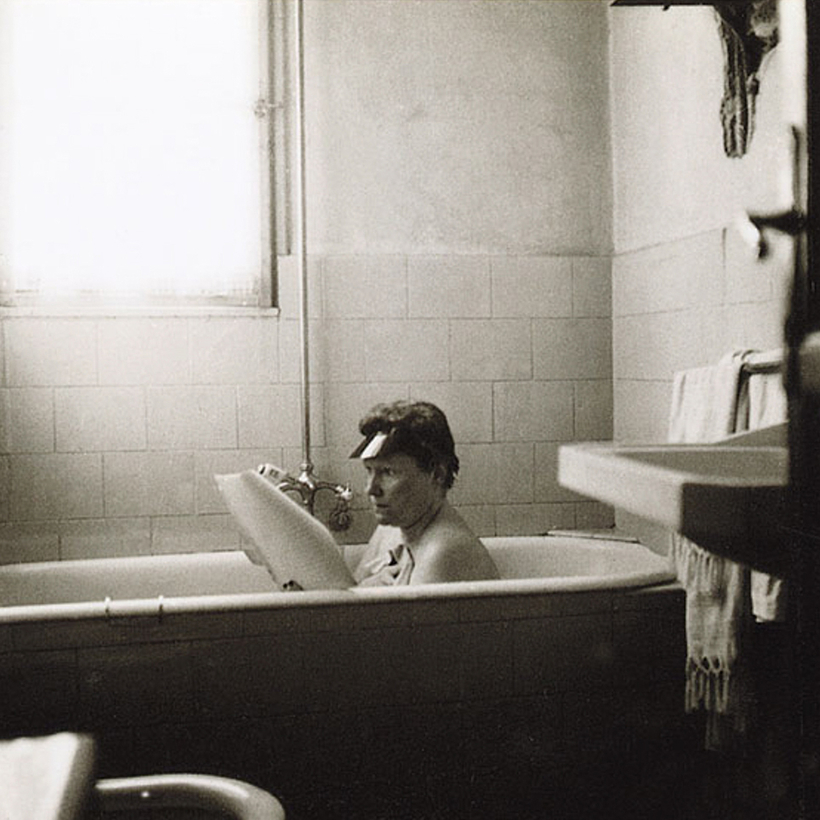The doctor who delivered Sybilla Aleid Elsa von Schoenebeck on March 16, 1911, in Berlin had a keen eye. “She looks so clever,” he said. Indeed. She grew up to be Sybille Bedford, successful novelist, travel writer, judicial commentator, biographer, and memoirist. Her true genius, however, may have been for friendship. Selina Hastings’s biography, rich with excerpts from diaries and letters, does full justice to Sybille the writer, but she intrigues the reader most with her account of Sybille’s relationships. As a fisher of friends, Sybille cast a net around the globe and the century.
Sybille’s parents were a handsome, unhappy pair: her father, an impoverished minor German aristocrat known as “le Beau Max”; her mother, Lisa, a spoiled beauty, Jewish by birth, with a formidable intellect and an intense desire to write.
When her parents separated, in 1922, Sybille was raised first by Max, who seemed to care more for his collections of antiquities and animals than for his daughter, and when Max died, in 1925, by Lisa, who boasted that she had no maternal instinct. When Sybille was small, Lisa had explained to her: “You’re going to be very, very dull for a very long time—perhaps ten or fifteen years. We’ll speak then, when you’ve made yourself a mind.”
Sandcastles and Gide
Making herself a mind is exactly what Sybille did. Often on the move, with little formal education, she taught herself to read and powered through the literature of three languages on her own. The pair finally landed in the fishing village of Sanary-sur-Mer, on the French Riviera. “A funny kind of girl you’ve got here, comes in from making sandcastles, then reads André Gide,” a friend observed to Lisa.

Sanary and its environs drew an international artistic elite—D. H. Lawrence, Aldous Huxley, Thomas Mann, Bertolt Brecht, Jean Cocteau, and Edith Wharton. Sybille grew up in this rarefied and intoxicating milieu, welcomed at a young age due to her ability to hold her own intellectually in conversation. She found her first life-changing friendship with Aldous and Maria Huxley, who made her a de facto member of their family as Lisa slid into morphine addiction.
Small and plump, with her blond hair cut very short, Sybille dressed and behaved like a young chevalier, quick to kiss the hand or light the cigarette of any woman. At 18, her physical initiation into lesbian love was with an older woman, Renée Kisling, wife of the painter Moïse Kisling.
Aldous Huxley, Thomas Mann, Bertolt Brecht, Jean Cocteau, and Edith Wharton welcomed Sybille at a young age due to her ability to hold her own intellectually.
Her impulse to write was as intrinsic to Sybille as her sexuality, but it was much more difficult to realize. She was always easily distracted by travel, food, parties, and love, and so her many resolutions toward self-discipline usually failed. When she did sit down to work, she found the process “tearing, crushing, defeating agony.”
She wrote three novels in her 20s, all imitating Aldous Huxley’s style, all swiftly rejected everywhere. It would be almost two decades before she found what Hastings calls “her own remarkable voice.”

In the meantime, the rise of Fascism made Europe dangerous for Sybille, half Jewish and still a German citizen. “We must get one of our bugger friends to marry Sybille,” Maria Huxley decided. Aldous launched a search for a man with the right combination of “impecuniosity, honesty, and homosexuality.” Eventually, Walter Bedford, an attendant at a London gentleman’s club, was paid $490 to marry Sybille in 1935. The newlyweds never saw each other again, but Sybille got a new name and a British passport.
It would be almost two decades before Sybille found what Hastings calls “her own remarkable voice.”
By 1940, Hitler’s march through Europe scared Sybille off to America. She spent almost seven years there, usually afloat in the cream of literary New York and Los Angeles. More productive was an eight-month tour of Mexico at the end of her stay, a trip that resulted in her first published book, released in 1953. A charming, vivid, idiosyncratic account of her travels, The Sudden View was an immediate critical and popular success on both sides of the Atlantic.

Over the following decades, four novels, a major biography of Aldous Huxley, a body of superb judicial reporting, and more travel pieces appeared. Sybille’s memoir was published in 2005, not long after her 94th birthday. She died the following year.
Sybille once said, “It’s not easy to be my friend. I have very, very high demands on intelligence, manners, appearance.” Yet she managed to find countless suitable candidates. If she owned anything as common as a Rolodex, it was one for the century. Freya Stark, Thomas Mann, Janet Flanner, Julia Child, Martha Gellhorn, Bruce Chatwin, M. F. K. Fisher, Rosamond Lehmann, and Jane Bowles are just a handful of the people who come to life in this biography. Sybille Bedford’s many loves—of food and wine, of London, Paris, and Rome, of lovers and friends, of literature and the tough task of creating it—live again here.
Robin Olson is a Los Angeles–based writer and editor

